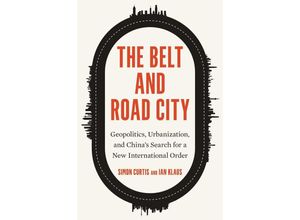An exploration of how China’s Belt and Road Initiative seeks to reshape international order and
how it has catalyzed a new era of infrastructural geopolitics Over the past decade China
has put infrastructural and urban development at the heart of a strategy aimed at nothing less
than the transformation of international order. The Belt and Road Initiative which seeks to
revitalize and reconnect the ancient Silk Roads that linked much of the world before the rise
of the West is an attempt to place China at the center of this new international order one
shaped by Chinese power norms and values. It seeks to do so in part by shaping our shared
urban future. Simon Curtis and Ian Klaus explore how China’s specific investments in urban
development—cities roads railways ports digital and energy connectivity—are directly linked
to its foreign policy goals. Curtis and Klaus examine the implications of these developments as
they evolve across the vast Afro-Eurasian region. The distinctive model of international
order and urban life emerging with the rise of Chinese power and influence offers a potential
rival to the one that has accompanied the rise and zenith of Western power marking a new age
of infrastructural geopolitics and Great Power competition.



